Echoes of Ancient Lands
Bom Jesus Basilica Old Goa India
Mother Masala Tours
A 16th Century Portuguese Masterpiece
Bom Jesus Basilica Old Goa India. Stands near Goa as India's first Minor Basilica, constructed between 1594 and 1605 during Portuguese colonial rule. The foundation stone was laid under Philip I's reign by Governor Francisco da Gama. Designed by Domingos Fernandes, this stone structure employs Doric, Ionic, and Corinthian styles with laterite blocks plastered with lime. By 1605, the church was consecrated and gained basilica status in 1946. Housing the remains of St. Francis Xavier since 1622, the church became a Unesco World Heritage Site in 1986. The population around Old Goa declined after the capital moved to Panaji in 1843.
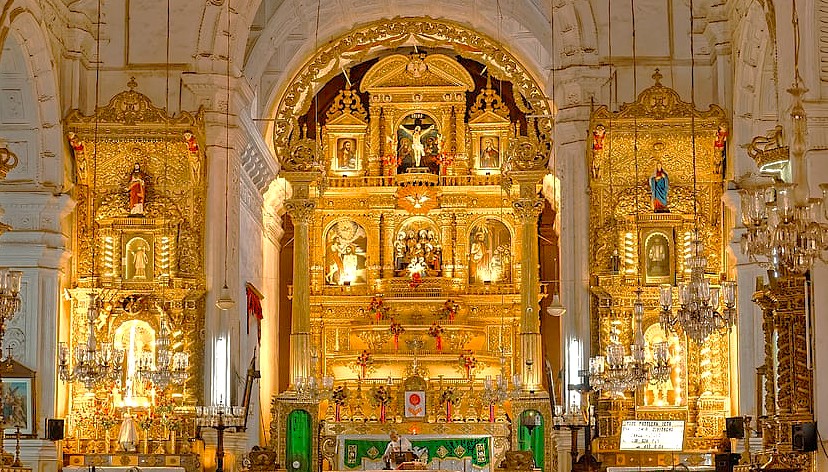
Bom Jesus Basilica Old Goa India: Timeless Artifacts
The magnificent gilt altar holds a 3-meter-high statue of St. Ignatius Loyola flanked by exquisite infant Jesus carvings from the 17th century. The Mortuary Chapel contains St. Francis Xavier's remains in a silver casket completed in 1637. Each level of the massive retable includes detailed wooden sculptures representing scenes from Christ's life. The church museum displays religious artifacts including priestly vestments dating from 1700.
Impeccable Craftsmanship
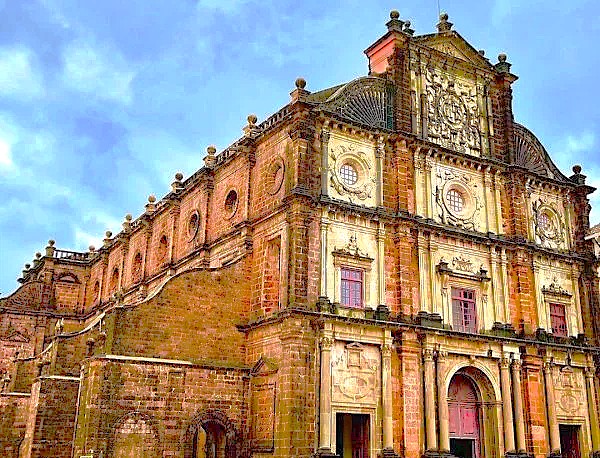
Portuguese artisans created detailed flooring designs throughout Bom Jesus Basilica during early 1603 under Matheus Fernandes' leadership. The geometric patterns incorporate symbolic elements that represent Christian stories through visual means. Giovanni Battista Foggini arrived from Italy in 1697 to design the elaborate tomb holding St. Francis Xavier's remains. Several Florentine sculptors worked alongside him to complete the detailed panels showing missionary activities across Asia. Master craftsman supervised extensive gilding work on the main altar between 1624 and 1627 using gold imported from Portuguese colonies.
The Pulse of the Local Community
Bom Jesus Basilica Old Goa India. Locals maintain strong Catholic traditions with multi-generational families taking turns maintaining the basilica grounds throughout the year. Community members participate in daily masses, bringing fresh flowers and handmade offerings each morning. The residents preserve Portuguese-influenced Goan traditions through music, dance, and cuisine that they share through seasonal festivals. Their hospitality extends to explaining the history and importance of specific areas within the basilica. Many families can trace their ancestors back to the basilica's construction, maintaining personal connections to specific parts of the building.
Capturing the Magic: A Photographic Haven
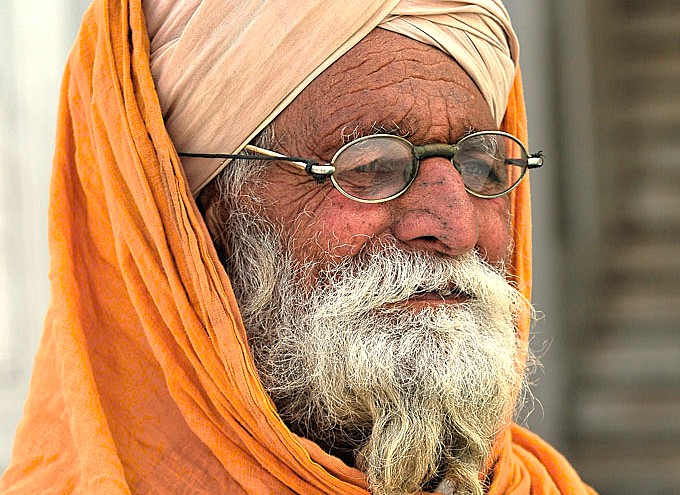
The morning light creates dramatic contrasts on the Bom Jesus Basilica facade between 7-9am when golden rays highlight the stone textures. Afternoon photography works well for interior shots as sunlight filters through windows onto the ornate altars and religious artifacts. The basilica's exterior photographed against clear blue skies creates striking images, especially from the western side. Capturing the detailed carvings requires macro lenses or careful positioning to reveal detailed craftsmanship. The area offers interesting photography opportunities including local markets, streets and churches.
A Culinary Journey: Savor the Flavour
Around the basilica, small cafes serve bebinca, a traditional layered Goan dessert made with coconut milk, eggs, flour, and sugar. Each layer requires separate cooking, creating distinctive textures throughout. Nearby establishments prepare sorpotel, a spicy pork dish with vinegar, cloves, and cinnamon that Portuguese settlers introduced. Fresh seafood xacuti combines coconut, red chilies, and turmeric in a curry that originated during colonial times. Feni, a cashew or coconut spirit unique to Goa, accompanies meals at local establishments situated within walking distance of the church.
The Connection With the Gods
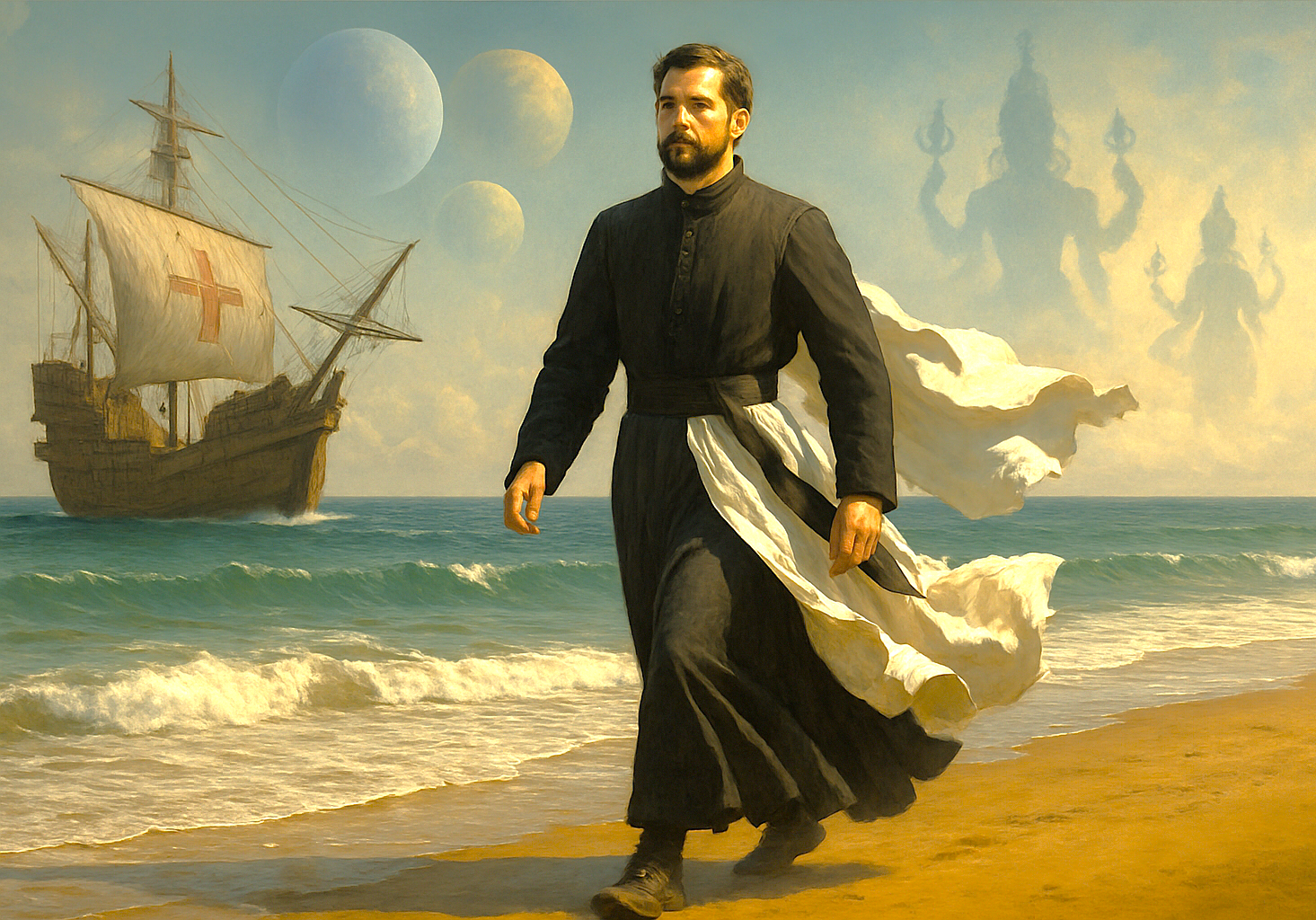
St. Francis Xavier, revered as the "Apostle of the East," arrived in Goa in 1542 and conducted missionary work throughout Asia. The basilica incorporates imagery of Jesus Christ as "Bom Jesus" - Good Jesus, representing divine compassion. St. Ignatius Loyola, founder of the Jesuit order, appears prominently in artwork throughout the church. The Holy Trinity concept underlies the basilica's three-tiered design according to Jesuit symbolism. Archangel Michael, depicted conquering Satan in a main altar painting from 1629, represents the triumph of good over evil in Catholic theology.
Resilience and Renewal: Overcoming Adversity's Challenges
Bom Jesus Basilica Old Goa India. The devastating fire of 1663 destroyed wooden portions of the interior, requiring extensive rebuilding by Governor António de Mello e Castro. The earthquake of 1776 damaged the bell tower, which was restored under Portuguese architect António Correia's supervision by 1781. Colonial authorities abandoned the basilica during the 1835 religious orders suppression, leaving it vulnerable to decay until Archbishop Teotónio Rebelo Valente organized restoration in 1859. Termite infestations in 1920 threatened wooden structures until comprehensive preservation efforts implemented metal supports. The structure withstood severe monsoon flooding in 1957 that damaged many surrounding buildings.
Serendipitous Meetings: Beyond the Main Path

Walking through nearby Fontainhas quarter reveals artisans crafting traditional brass oil lamps using techniques unchanged since Portuguese times. Small bakeries produce pão, traditional Portuguese-style bread baked in clay ovens built generations ago. On side streets, elderly craftsmen repair antique religious items including rosaries and medallions. The Thursday morning market brings farmers from surrounding villages selling seasonal produce and handmade crafts. Behind the basilica, traditional tile makers demonstrate the art of azulejos creation using local clay and historic glazing techniques dating to the 17th century.
Ancient Technologies: Sacred Sound, Geometry & Astrological Influences
The basilica's dimensions follow sacred geometry principles with the golden ratio (1:1.618) appearing throughout its proportions. The main dome creates a resonance chamber amplifying the 528 Hz frequency—known as the "miracle tone" that promotes harmony during choir performances. Builders positioned the structure on a west-east axis allowing solstice light to illuminate specific altar areas twice yearly. The laterite stone walls contain high iron content that affects acoustic properties, creating natural amplification. The ceiling height was calculated to produce seven-second echoes that enhance Gregorian chants during services.
Festivals of Devotion: Honouring the Sacred and the Divine
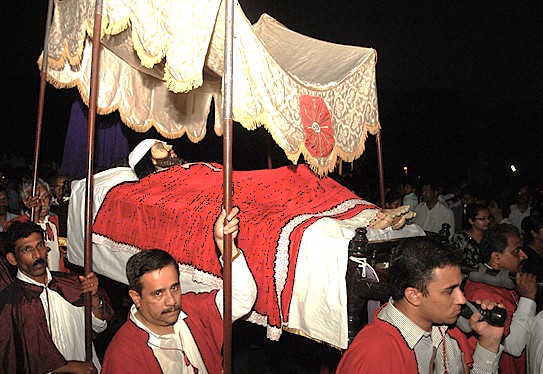
The Feast of St. Francis takes place every December 3rd, attracting pilgrims from across India. The Exposition of Xavier occurs every ten years (next in 2035), when the saint's preserved body leaves its casket for public viewing over several weeks. Holy Week celebrations in April include a solemn Good Friday procession where participants carry statues through surrounding streets. The November 24th feast day of Christ the King features ornate floral decorations throughout the basilica created by local families who spend days preparing their contributions.
Urban Legends: Strange Sightings, Myths and Mysteries
Bom Jesus Basilica Old Goa India. Local stories tell of midnight bell tolls heard when no one occupies the tower, attributed to spirits of Augustinian monks from nearby ruins. The "weeping statue" phenomenon allegedly occurs annually on January 13th when moisture appears on St. Francis Xavier's face. Underground passages supposedly connect the basilica to other Old Goa churches, created as escape routes during invasion threats. Fishermen claim St. Francis Xavier's spirit appears as a light over water during stormy nights, guiding boats safely to shore. The unexplained preservation of St. Francis Xavier's body, resisting decay for centuries, continues to puzzle medical experts.
Pack Your Bags, We're Going, and You're Invited
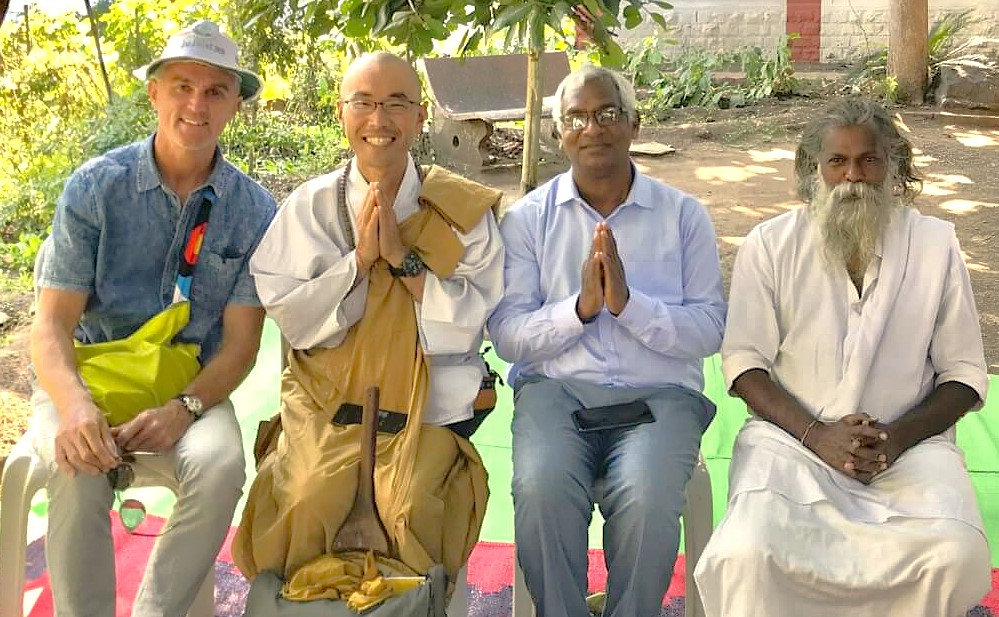
We'll time our visit for the golden hours when sunlight bathes the façade in warm tones. You'll stand beneath the massive dome while we explain the symbolic meaning behind each carving and painting. Together we'll explore the museum collection housing religious artifacts from the 16th century. Our journey takes us through the mortuary chapel where St. Francis Xavier's remains rest in an ornate silver casket. The basilica comes alive when we understand the historical context behind each architectural element.